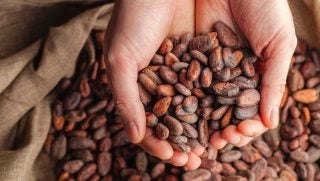Agricultural conservation practices are pivotal to addressing some of agriculture’s most important natural resources concerns. At the same time, it is critical that farmers run profitable businesses and that environmental stewardship priorities support farm profitability. Conservation’s Impact on the Farm Bottom Line is a new report from Soil Health Partnership (SHP) that details the financial impact of conservation tillage and cover crop usage among Midwest corn and soybean growers.
This project, done in collaboration with Environmental Defense Fund and the accounting firm K•Coe Isom, aimed to:
- Compare crop budgets for fields using conventional vs. conservation practices
- Identify benefits, opportunities and limiting factors associated with common conservation approaches, and
- Help farmers and their business partners better understand the financial dynamics of conservation practice adoption
Based on an analysis of farm operations, management practices and financial records, the project team identified three key takeaways.
Conservation tillage reduces operating costs, resulting in higher net returns per acre among study participants.
In the face of a challenging farm economy, reducing costs of production can be one way for farmers to improve profitability. By reducing or eliminating tillage, growers were able to reduce operating costs. In our study, growers practicing conservation tillage had higher net returns and lower per-acre costs than fields under conventional tillage for both corn and soybeans. Cost savings largely resulted from fuel and oil, machinery, equipment and repair expenses.
Cover crops can be part of a profitable farming system, especially as experience with the practice grows.
The study found that, while this conservation practice requires up-front investment (e.g., seed), profitability with cover crops improves as growers get more experience with this approach.
All of the farmers we worked with used cover crops on at least a portion of their acres, but their scope of use, management practices, and experience level varied. We found that, while this conservation practice requires up-front investment (e.g., seed), profitability with cover crops improves as growers get more experience with this approach. For example:
- Farmers in our study with more than five years of experience with cover crops had lower per-acre costs and higher net returns than farmers with less than five years of experience with cover crops.
- Cost savings among more experienced cover croppers were most often seen in seed expenses and cover crop and fertilizer application costs, indicating a learning curve as growers identified their best “recipe for success” over time.
Success with conservation practices is optimized when farmers take a targeted, stepwise, tailored approach to implementation.
Profitable conservation systems do not look the same on every farm since growers implement different strategies to address their specific needs. Farmers in our study achieved profitable conservation systems by aiming to address specific management challenges with in-field conservation practices. It is critical that we go beyond asking farmers what they are doing and expand to why they are using a certain approach and how that influences their decision making. For example:
- Some of the most common challenges addressed through conservation approaches were attempting to improve soil structure as a way to improve water management and reduce erosion, and minimizing passes across the field to save time, machinery, and overhead costs.
- Growers tend to take a stepwise approach to testing and adopting cover crops, but often transition to conservation tillage all at once. This reflects the learning curve for identifying the best cover crop species and mixes, seeding methods, and termination approaches – and then allowing time to make decisions based on observed outcomes. Financial and technical support can help farmers navigate the learning curve effectively. Programs like SHP help farmers test and measure the outcomes of their transition to conservation systems.
To learn more about Conservation’s Impact on the Farm Bottom Line, visit the Soil Health Partnership website.


